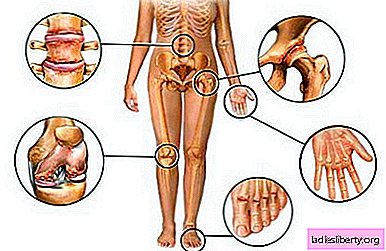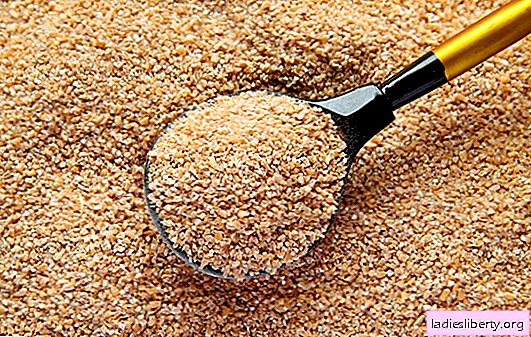
Osteoarthrosis - A chronic joint disease in which articular cartilage, as well as the adjacent part of the bone, undergo degenerative changes. As a result, a person begins to experience pain, stiffness of the joints appears. Osteoarthrosis occurs in most elderly people (over the age of 70).
Osteoarthrosis - causes
Primary osteoarthritis occurs due to impaired cell functions, which are responsible for the synthesis of components of cartilage tissue. As a result, the articular cartilage becomes thinner, loses elasticity and cracks. Subsequently, the smooth surface of the cartilage becomes rough, the joint loses the ability to function normally, crunching and painful sensations appear.
The cause of osteoarthritis can be another disease (Paget's disease, trauma or deformation of the joint, infection, increased load on the joint), this osteoarthrosis is called secondary.
The risk group includes people whose joints are subjected to increased stress due to the characteristics of professional activity, which may be associated with hypothermia, hard physical work, and professional sports. In addition, people who lead a sedentary lifestyle and are obese are at risk. Quite often, people suffering from endocrine system diseases (for example, diabetes mellitus) suffer from osteoarthritis.
Osteoarthrosis - Symptoms
Symptoms of osteoarthrosis usually develop gradually. The very first symptom is pain, which is characterized by increased physical exertion. In a number of patients, stiffness of the affected joints after sleep is noted, passing as the person begins to move.
Gradually, the disease begins to worsen, the affected joint loses its mobility, touching it becomes very painful. Osteoarthritis usually begins to progress slowly, however, there are cases when the disease can stop or even regress.
Osteoarthrosis - diagnosis
The diagnosis of osteoarthritis is made on the basis of the following tests:
- blood tests (general and biochemical);
- study of synovial fluid;
- X-ray examination;
- study of a diseased joint using ultrasound;
- arthroscopy.
Osteoarthrosis - treatment and prevention
1. Compliance with the regime and diet. First of all, it is necessary to get rid of excess weight, which creates an additional burden on sore joints. You should refrain from physical overload, as well as from joint injuries. Instead of soft chairs and large pillows, it is better to use chairs with straight backs and a hard bed. Physical therapy is of great importance in the treatment of osteoarthrosis.
2. Drug therapy. The most applicable drugs in the treatment of osteoarthritis are ibuprofen, ketoprofen, diclofenac. Good results are achieved with meloxicam and nimesulide. In case of isolated joint damage, local preparations are used in the form of creams and ointments. In severe cases of the disease, topical use of corticosteroids is possible.
3. Physiotherapy. Physiotherapeutic methods of treatment include electrosleep, electrophoresis according to the Vermel method, microwave resonance therapy, acupuncture, laser therapy, diadynamic therapy and a number of other procedures. Patients with osteoarthritis will be useful resorts with hydrogen sulfide, sulfur and radon sources, therapeutic mud.
4. The surgical method. If necessary, joint arthroplasty is used.
Preventive measures include control of body weight, as well as compliance with the normal intensity of physical activity (do not exclude and do not abuse).
Comments











